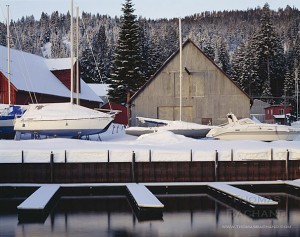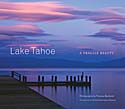As a kid, the drive to Tahoe from the Bay Area quickly left the city and found rural California. Concord was the edge of the Bay Area. Vacaville was an outpost. Then came the agriculture in California’s Central Valley. Beyond Sacramento, Hwy 80 quickly found the foothills and isolated Auburn, then the forest, and, finally, the bald granite atop the Sierra where one felt a sense of crossing a frontier.
Making that right turn at Fanny Bridge in Tahoe City brought a sense of serenity. This quiet mountain road through pine, fir and small communities would take its time finding the shore where we would rediscover Lake Tahoe all over again.

